Below is the link to my blog as it appeared in the daily Express Tribune on 11th June, 2013, titled: “Did the new IT Minister really threaten to ban Google in Pakistan?”
Below is the link to my blog as it appeared in the daily Express Tribune on 11th June, 2013, titled: “Did the new IT Minister really threaten to ban Google in Pakistan?”
Below is the link to my blog, published in daily Express Tribune on 11th June 2013, titled: “What Anusha Rehman should do for Information and Communication Technology”
The PML-N has done well to appoint Anusha Rehman as the new Information Technology minister. As an ICT professional myself, I venture to suggest what the government should now do.
Information and communication technology is a fast-moving high-tech sector where policies get outdated quickly. The government should take up the job of creating the new ICT policy urgently, with inputs from all stakeholders. However, there is no need to wait for the policies to be in place before starting the long-delayed, vital ICT development programmes.
Broadband deserves a special treatment because its impact on the Millennium Development Goals is now widely acknowledged. Since 2010, the UN Broadband Commission for Digital Development has been actively helping countries prioritise the roll-out of high-speed broadband networks through National Broadband Plans to support their goals of inclusive economic growth and competitiveness in the information age.
Most countries have realised the importance of Optic Fibre Highways and are working feverishly to increase fibre penetration. When I was working at Universal Service Fund, we made good progress in the programme, “Optic Fibre to every Tehsil”. Now, the need is to extend the fibre to all the 6,000-plus Union Councils, terminating at the community tele-centres there. Even in the short term, thousands of jobs will be created through this effort.
High-speed broadband connected community tele-centres could become a source for all kinds of information for villagers. Each centre, equipped with PCs, allied equipment, Wi-Fi hot spots and renewable sources of power, should be run by rural development organisations that have roots in those areas, with professionally trained trainers. The broadband connectivity available at these centres could then be extended to neighbouring schools, healthcare centres, post offices and government offices, etc.
Out of all the destinations of broadband, none is more important than in schools. Information and Communication Technology is all-encompassing since it impacts every sector of the economy. Therefore, if our new generation does not grow up with the knowledge of using ICTs, they will be left behind. It has been learnt that connecting schools with broadband is not the only need of the hour. In fact, the provincial education and school administrations should be on board to develop/provide relevant local content (with links to the curriculum), create portals, implement child protection policies, and train the teachers. The need to train cannot be stressed enough.
It is a pity that even Afghanistan has 3G and we do not! Worldwide, there are more than two billion 3G subscriptions. The PML-N manifesto favours 4G (100 million users worldwide). It is the private sector that then goes for the most viable technology in the given spectrum band. But there is simultaneous space for 3G as well as 4G. Therefore, the spectrum for both should be auctioned, with less emphasis on the price and more on widespread, time-barred roll-out obligations.
Fortunately, in ICT, government budget constraints are not something to worry about but the government has to provide clear policies, fair regulations and a level playing field to promote competition and let the citizens enjoy the fruits. If at all the government has to intervene with cash, it is in areas that the private sector doesn’t find lucrative enough. And, for that, there is the Universal Service Fund. It is the private sector which brought the 2G revolution in Pakistan, along with massive amounts of foreign direct investment, and it is the private sector which should be given the challenge again.
Published in The Express Tribune, June 11, 2013
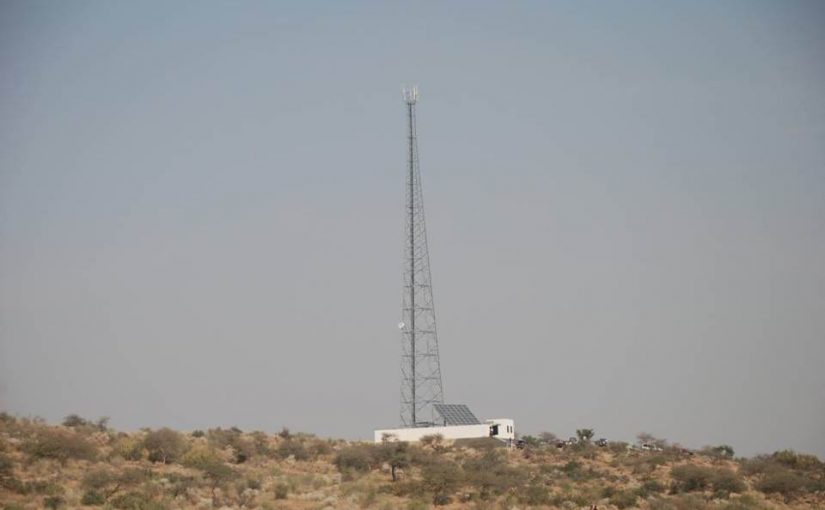
I have a big problem with the findings of the recent otherwise very comprehensive and detailed GSM Association sponsored report on Universal Service Funds (GSMA Resources). It has been prepared by Ladcomm Corporation, compiled mainly by the well known fellow consultant Lynne Darwood. No praise would be too high for the amazing amount of information collected from all across the world (64 countries). I know how difficult it is to collect, to verify and to corroborate, information that is mostly inaccessible. The team at Ladcomm must have worked really hard to come up with something as awesome as this.
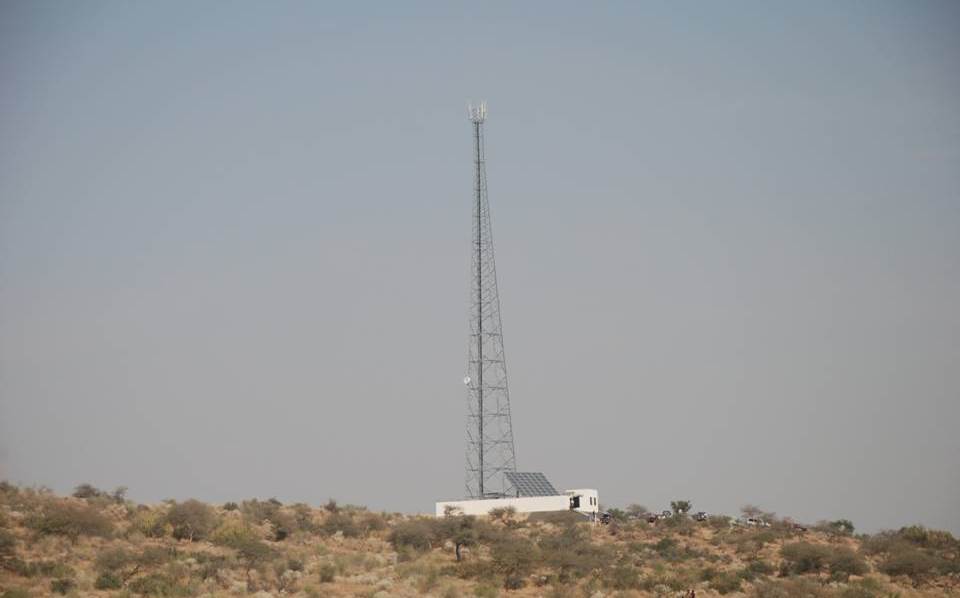
But as someone who headed a USF organisation for nearly five years (and thank God this one is known to be among the better ones) my big problem is with the set of “Key Findings” that appear as a separate section. In these findings GSMA is proclaiming that USFs are inappropriate and irrational and that there are better alternative approaches. In my opinion GSMA should not be doing this because it is based on deductions that appear to be misleading. Let me try to explain why.
Inability to disburse funds
The most significant (though not new) finding of the GSMA Report is that USF Administrations and Governments have been able to disburse far less than what is collected. Now this is true, but not right! Many USFs have infrastructure roll-out plans – even legally binding contracts – worth hundreds of millions of dollars extending over several years, where the funds are committed to be disbursed, waiting for the targets to be reached. Therefore instead of just looking at disbursed sums one should also be looking at the allocated and planned sums. India is quoted as an example of the huge undisbursed amount, so I talked to Mr Ravi Shankar, Administrator of Indian USOF (www.usof.gov.in/). He informed me that the total amount collected since 2002 is Indian Rupees (INR) 47,000 crore (1 crore = 10 million), out of which INR 15,600 crore has been disbursed and INR 15,800 crore allocated, which leaves a balance of INR 25,000 crore. The recently launched National Optic Fiber Network (a flagship Indian Broadband project) is estimated to cost nearly the same. Now with the present annual inflow of INR 6,000 to 7,000 crores, there wouldn’t be enough for the upcoming projects of cellular towers (with renewable energy plus 5-years Opex) in the North-Eastern areas and other 56,000 yet-unserved villages across the country. Ladcomm’s figures are true but the inferences are not. The devil hides always in the details.
Similarly in case of USF Pakistan (www.usf.org.pk) it shows that out of US$550 million collected only $90 million has been disbursed. But it fails to mention that through the legally binding contracts with the operators, three to four times that amount is committed – despite the previous government’s uncalled-for political interference and incompetent handling of the Fund. There is more to it. When I was heading USF Pakistan there was a GSM operator who completed hardly 25% roll-out in one year, although the contract stipulated 100% during that time. Later when the floods came in that area he tried to claim damages! My point is some of the slow disbursement is also due to causes with GSMA’s own members.
I fully agree with GSMA that the administrations must also come out clearly as to what they have in store, how much are the inflows and how much has been allocated. Transparency helps all sides and above all, holds oneself accountable!
Political Interferences
The Findings speak of many cases where political interventions affected the performance and quotes examples of Brazil, Indonesia and Pakistan. Being a Pakistani myself I can agree with that too. The Fund was indeed working smoothly and the USF Board met every six weeks to review and deliberate on the projects and take appropriate decisions. But then the Prime Minister took over the chairmanship of the Board and from there it was downhill. It took ten months just for the first Board meeting to take place – extensively damaging the USF by delaying decisions that affected the ongoing, as well as new, projects. Same trend continued. However that cannot be cited as an argument against USFs due to two reasons. First because at that time nothing was working in Pakistan – be it ICT, Governance, Electricity, Petroleum, Gas, Railways, Airlines, the list goes on. Therefore any alternative approach wouldn’t have worked either. In fact even in such worst conditions, thanks to the robust USF model, funds could not be misused. Secondly USF in Pakistan is registered as a Company and the company-law allows its Board of Directors to call the Board Meeting without waiting for its Chairman. The Industry (whom GSMA represents – at least partly) is well represented on the Pakistan USF Board. They could have easily put some pressure by holding at least one meeting without the PM. I am sure that the situation in Brazil and Indonesia must have similarities. That is why I say that blaming USF is unfair.
Alternative solutions
GSMA findings quote Finland and Bangladesh as good examples of alternative solutions – but both are irrelevant. Firstly to quote a developed country like Finland as an example makes one wonder if GSMA is even aware of the issues and challenges in the developing countries. Secondly Bangladesh is uniquely different. It is flat and very thickly populated (above 1,000 persons per square km). Consequently with relatively little infrastructure 100% connectivity was achieved which Grameen wisely utilised by creating privately owned Computer Information Centers (CICs) mostly with one computer and EDGE connection – not broadband. But compare that with a place like Balochistan province of Pakistan (more than twice the area of Bangladesh) with a population density of around 50. Try providing connectivity to all without financial incentives!
It appears that GSMA believes that the operators will indeed extend service to unserved areas without financial incentives. Well I can say with authority derived from personal experience that in most such areas the operators are unwilling to do so even WITH financial incentives.
The findings of GSMA Report speak of anectodal evidence to show that improved accessibility, coverage and service quality can be accomplished by alternative solutions, such as making those part of license obligations of the operators. But there are several examples where this method was tried and did not work. Like in Tanzania. Peter Ulanga, head of Tanzanian USF told me that from 1994 to 2005 Tanzania tried to provide services to rural areas through license obligations, and that too against a one-time license fee of a measly US$ ONE million. But still the operators always looked for caveats and the objectives could not be achieved. Then from 2005 to 2009, there were neither obligations nor levies in Tanzania. Nothing happened.
Another alternative approach that GSMA supports is the “pay or play” model, where the operators can choose if they want to provide services in non-lucrative areas on their own or pay into the Fund. Several countries have tried and given up that model, most recently Thailand dropped it just a few months back. It doesn’t work and creates too many issues and disputes. I don’t understand why GSMA is advocating a tested and discarded model.
What should GSMA be doing
USF is like democracy – its not the best system, but nothing else has proven to work better. Therefore instead of soliciting closing of USFs in developing countries, who are grappling with the challenge of connecting their citizens for inclusive growth, GSMA should try to help. Help by offering technical and managerial assistance in improving legal frameworks and structures, and by providing know-how for training and education, eg. via broadband access points. GSMA should also try to coax its member telcos to prevail against negative political interferences.
In short, GSMA should help, rather than strangulate, the well-intentioned USFs.
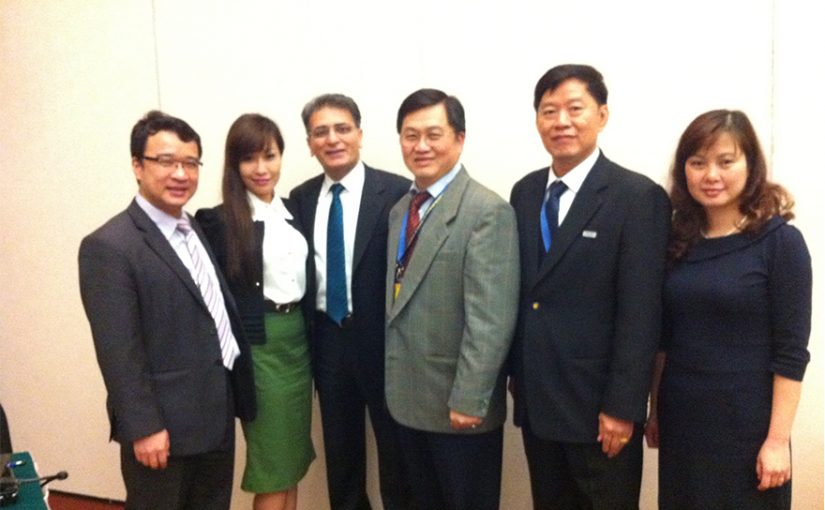
Such is the importance being given to Universal Service and Broadband all over the world that if you look at the APEC TEL Strategic Action Plan: 2010-2015*, the very first item is: 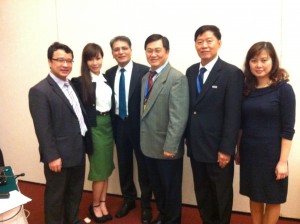
Supposedly APEC-TEL 47 will generate recommendations that will be presented to the APEC-TELMIN (council of TELecom MINisters). The TELMIN will form their own recommendations which will become part of the agenda of APEC Summit to be held in BALI in November 2013. President Obama is expected to be one of the 21 leaders who will participate. Preparations are already going on for the summit (the brand new airport terminal building will also open in time). For Indonesians it holds special meanings as President Obama spent part of his childhood in Indonesia.
The very first day was this full-day session on USF with about a dozen speakers from different countries – Vietnam, Japan, China, Indonesia, Malaysia, Thailand, Brunei, USA, South Korea, and so on. One could hear about various solutions 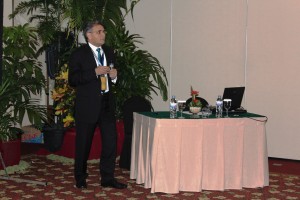
For the first time I came to know of the scheme in South Korea, where they have a very interesting model of a “Virtual USF”. There is no real fund as such and what they do is that the losses of the operators who provide services to the designated PNLAs (Potential Net Loss Areas) are compensated up to 70% by rest of the operators. The total compensation amount that is settled is a result of “bargaining” among themselves (yes there is actually bargaining). The contributions are in proportion to their revenues. Consequently there is no USF administration because it is just an accounting matter and there are a couple of persons in the Ministry who are assigned to co-ordinate.
The Japanese too have a different model and they also compensate the losses of providing services to people living in remote/high cost areas, or people with disabilities, or for emergency lines and payphones. If the cost of providing such service is above the National Average Cost + 20, then that is loss! The basis of contributions is not pegged to revenues but to numbers of subscribers that the contributing carrier holds. Calculation is based on a per subscriber per month rate. The Japanese have not yet made Broadband as their target Universal Service. They say that first there has to be a considerable increase in broadband utilization rates and then a national consensus has to be reached!
I found the presentation of United States USF also interesting. It is one the oldest and biggest USFs (2012 disbursements US$ 8.7 Bil). They too strive to provide affordable services (incl Broadband) to rural and high cost areas (about 50% goes there), advance telecom services to schools and libraries (about 25%) and remaining to ‘life-line’ plus rural health care facilities. The contribution factor is announced quarterly. Currently it comes to approx. $1.2 per line, per month. US has the reputation of a costly administration (USAC) and a complex mechanism, whereby a substantial amount of the money collected is spent in USAC itself.
USO mechanisms of several other countries (Vietnam, Brunei, Malaysia, Thailand, Indonesia, etc.) were well presented 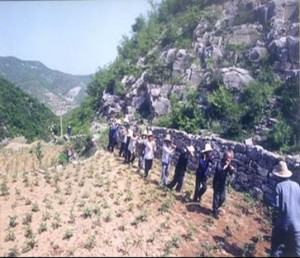
For me it was interesting to hear presenters from Thailand (Mr Channarukul) and Indonesia (Ibu Woro) tell the audience that they are in the process of reforming their USOFs. Thailand is about to launch a pilot under the new bidding scheme and in the next three years they intend to auction USF projects worth half a billion dollars, mainly broadband – a part of Smart Thailand program. Similarly Indonesia is in the process of reforming their USO. ‘Palapa Ring’ undersea Optic Fiber Cable project is already under way aiming to build a fiber optic network that will connect all the 497 districts/cities to support broadband.
What was exciting for me (again!) was that I am involved as a USF consultant
in both the above named countries. It does give a bit of satisfaction of being useful to some – if not to own people!
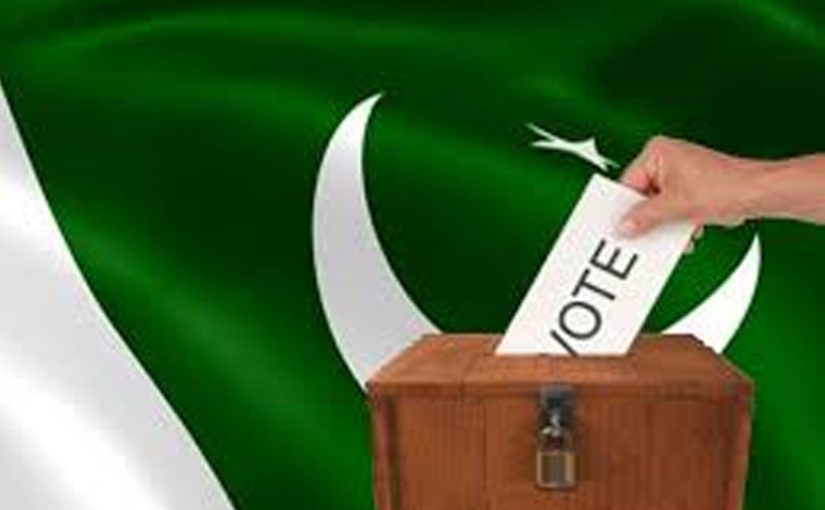
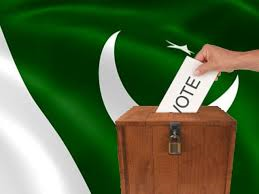
PPP
“Information and Communications, Science and Technology” are clubbed together with about 270
words given to the chapter in the 74-page PPP manifesto, within the section on “Infrastructure for the future”. In the Executive Summary part it claims that PPP has been “in the vanguard of building an IT-based future” and it’s government “enacted policies that have resulted in substantial gains in the Internet and cellular technology”. These claims will be disputed by many as the fact is that no new policies were enacted during the last 5 years, in fact there wasn’t even a full-time IT Minister to lead such an initiative.
The manifesto promises “plans for 3G and 4G”, making broadband available all over the country, developing software parks and promoting education and vocational training using ICTs. It also promises developing financial, educational, e-business and other e-services, thus eliminating exclusion of low-income groups. It promises to bridge the digital divide by promoting mass literacy through public–private partnerships. It seeks to utilise ICTs to enhance disaster warning and access to justice. Interestingly it also mentions promoting accountability through ‘biometric attendance’ and cutting governance expenses through video conferencing and paperless workplaces. One also finds mention of IT in another section in the manifesto, that of ‘Inclusive and Equitable growth’.
There is something intriguing about two of the promises in PPP’s manifesto – setting up 250 ICT centers in smaller cities plus taking IT sector trade to US$ 5 billion. The intriguing aspect is that PML N manifesto also promises both these things – with exactly double the quantities!
In 2008 Pakistan was ahead of all its neighbors, but then India, Sri Lanka and China have surged ahead. Even the other countries that are still behind (Afghanistan, Bangladesh and Nepal) show much higher growth than Pakistan.
PTI
To be honest I was expecting PTI would have the most to say on ICT – due to PTI’s focus
on youth and their strong presence on social media. But I what I saw were little more than a 100 words in a rather short 31-page manifesto. It promises to sustain “The recent progress in the access to Internet facilities…”. But unfortunately ICT professionals like me do not think much about the “recent progress” (as an example see the figure given at the end to see what happened in the cellular arena, where Pakistan was ahead of others).
The manifesto promises a few ‘reforms’ that PTI would initiate – like making PTA (Pakistan Telecom Authority) more autonomous, providing free internet to private recognized IT institutes and Universities, and increased foreign currency holding ceiling for software exporters. Interestingly PTI manifesto also talks about streamlining Rules “to eliminate discrimination and provide a level playing field between government-owned and private telecom companies”. By government-owned telecom companies, it probably means PTCL and Ufone?
In addition in a couple of sections other than ICT itself, utilisation of ICTs is mentioned (like Tele-medicine, Tele-agriculture and computerization of land-records).
PML N
In PML N manifesto IT and e-Government are both covered in
the same chapter (about 900 words in 84+ page manifesto). It promises building Information society and knowledge economy on four pillars (Governance, Public Services, Local Software and Technology). It promises establishment of an eGovernment portal and introducing ICTs at operational levels of the government – in law-enforcement, judiciary, health, education, manufacturing, taxation and transportation sectors. It promises the familiar IT labs and laptops for education and promoting ecommerce and online availability of information for the citizens. Interestingly it promotes 4G over 3G, claiming that 3G window of opportunity has passed (?) and promises to leverage cell phones for seeking feedback from citizens.
PML N targets US$10 billion as software export by 2020 through, among other things, giving incentives to industry like start-up assistance to software houses and “revising IT curriculum”. It speaks of setting up excellence centers with ICT R&D Fund money and bridging the digital divide by “improving USF”, setting up WiFi hotspots and 500 (why only 500?) ICT centers in smaller towns. PML N manifesto also promises prevention of cyber-crimes and respect for Intellectual Property Rights.
IT and its elements are mentioned at several other places in the document, like in sections about Economic Revival, Tax Reforms, Civil Service Reforms, Revival of Confidence, Education, Youth, Democratic Governance, Science & Technology, Employment, Corruption and Accountability.

USF proudly presents its first annual report, for the financial year 2008-09. It was definitely a prolific year for USF, during which, after starting and sustaining the rural telecom program, we successfully launched our Broadband and Optic Fiber Cable programs.
GM of Siemens, Parvez Iftikhar said that industrialization could lead Pakistan out of the present economic crises.
The Sindh Finance Minister, Dr. Abdul Hafeez Sheikh, has said the lack of public private sector partnership was one of the reasons impeding the progress in the country.
Siemens is committed to help Pakistan become a leading global player among the comity of nations.